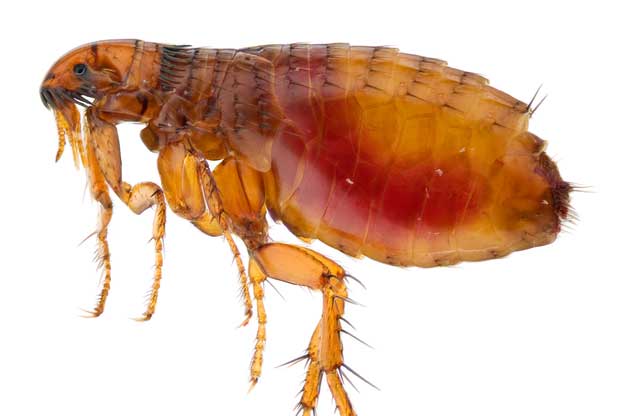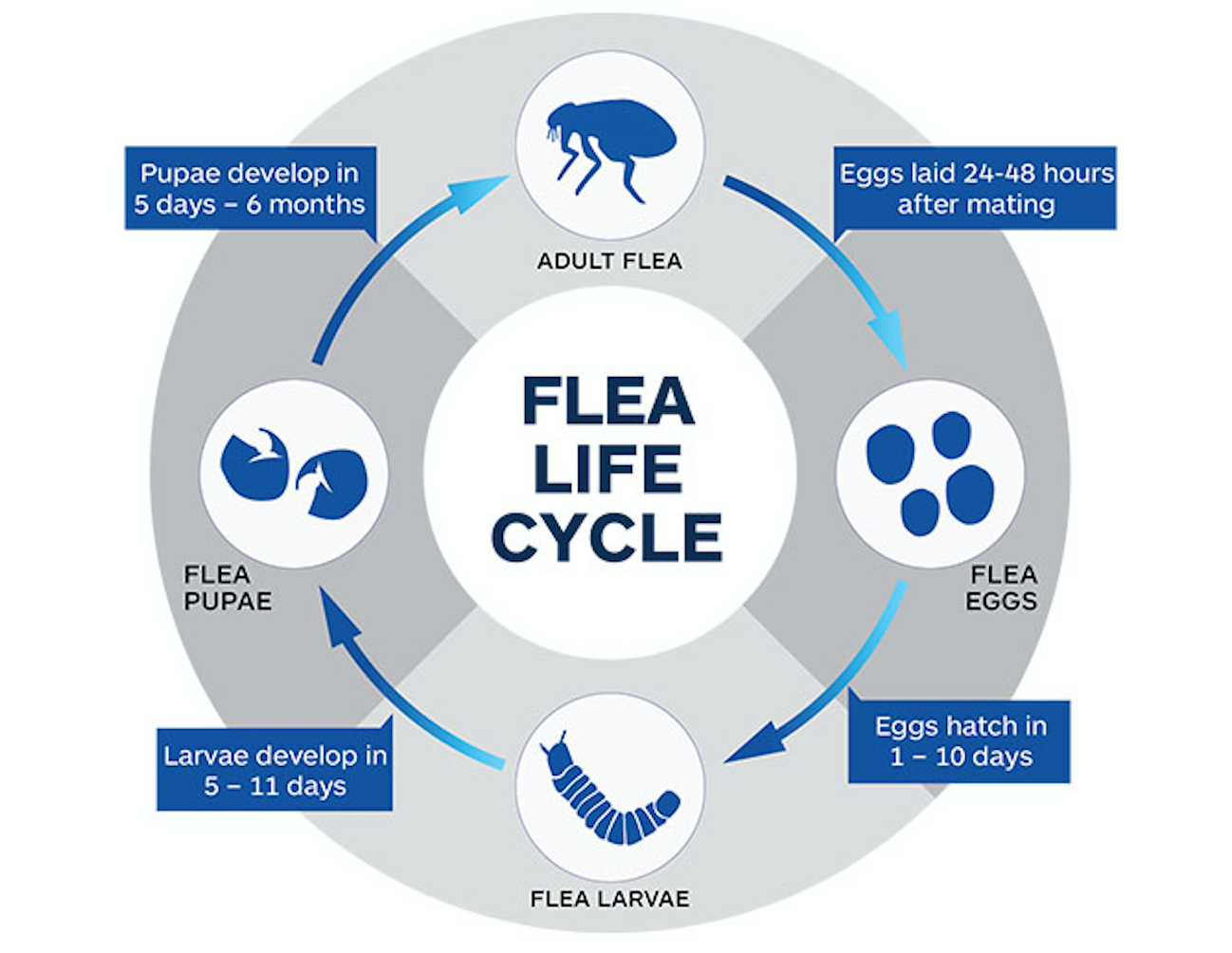The Patient
Summer, a 1 year old spayed female domestic shorthair cat, came to see me for being very itchy and having a skin problem. Her owner said that she had become super itchy in the last week or so and she had started to lose some hair on her neck and back. Summer was an indoor and outdoor cat.

CDC
The Case
On examination, Summer was highly pruritic (that means itchy) over her whole body, but the worst areas were at the base of the tail and the collar region. She had thinning of the hair and some scabs and bumps in these areas too. I found evidence of live fleas crawling on her skin and "flea dirt" on her body as well. Flea dirt is what we call the poop of the flea. Fleas are blood sucking parasites whose waste product looks like little black granules that feel gritty to the touch, almost like coffee grounds. When the flea dirt gets wet, it looks like red blood. Fleas are insects - and like all insects - have 4 life stages: egg, larva, pupa, adult. Only the adult stage is parasitic. Adult fleas must feed on an animal's blood to survive - that's all they eat. The adults live on cats and dogs (and other mammals too), mate, and then the female fleas lay eggs on the pet. The eggs fall into the environment and move into the next life stage called a larva, which is like a tiny maggot (eeww!). Flea larvae can move and creep into low traffic areas like between couch cushions, between floor boards, or under furniture. Flea larvae feed on flea dirt (double eeww!). The larvae then move into the pupal stage which is similar to a cocoon. They can stay in this stage for as little as a few days to many months depending on environmental conditions. They will not emerge until there is a signal that a blood meal is nearby. The adult then emerges and jumps back onto the pet and the whole life cycle starts again! When fleas bite and suck blood, they cause an irritation to the skin which makes the pet itchy. But, some pets are much more sensitive to flea bites and are actually allergic to the flea's saliva (yes, fleas have saliva). This allergy leads to extreme pruritus which then leads to self mutilation of the skin. Cats and dogs with a flea allergy scratch themselves to the point of breaking the skin barrier which allows bacteria to enter into the deeper layers of the skin and cause an infection. This is called flea allergy dermatitis or FAD. Summer was diagnosed with FAD.

NexGard
The Treatment Plan
The mainstays of treating FAD are flea control for the entire household as well as treating itch and skin infections. I prescribed Summer a systemic antibiotic, a steroid for her itch, as well as a topical flea product called Bravecto Plus for Cats. It is super important to treat all pets in the home or the flea infestation will never be controlled. Summer also lived with a dog, who was also my patient, so I sent home a dose of Bravecto for Dogs as well. Bravecto kills adult fleas and ticks and lasts for 2 months for cats and 3 months for dogs. I also recommended a thorough house cleaning and washing of all bedding. Since flea larvae prefer low traffic areas, it is important to clean in and under furniture and vacuum carpets repeatedly. Sometimes, if the infestation is severe, a professional exterminator may be needed. It is important to know that nothing can kill the pupal stage so we will need to wait until the pupae re-emerge as adults before they can be killed. It will take a few weeks to get the problem managed. Luckily, we have very safe and effective flea control products available for pets now. We have come a long way from flea dips, shampoos, and yard sprays that were less than ideal and often produced side effects for pets and people. I still remember my dad hand picking fleas off my dog growing up and bathing him in the garage sink every weekend. Thank you science!
The Outcome
I rechecked Summer a few weeks later and she was much more comfortable; her skin was healing and her hair was growing back slowly. Her owner now understood the importance of year round flea control in San Diego, California. Due to our mild climate, fleas are an issue all year long. Be sure to ask us about appropriate flea control for your pets at their next visit.
If you suspect your pet may have fleas, contact us to book an appointment right away.
The Drake Center for Veterinary Care is an AAHA-accredited animal hospital located in Encinitas, CA. The Drake Center loves being a source of information for all pet owners across the country however if you have any questions regarding pet care and do not live in Encinitas, CA or surrounding cities, we encourage you to contact your local veterinarian.
